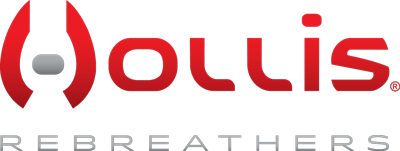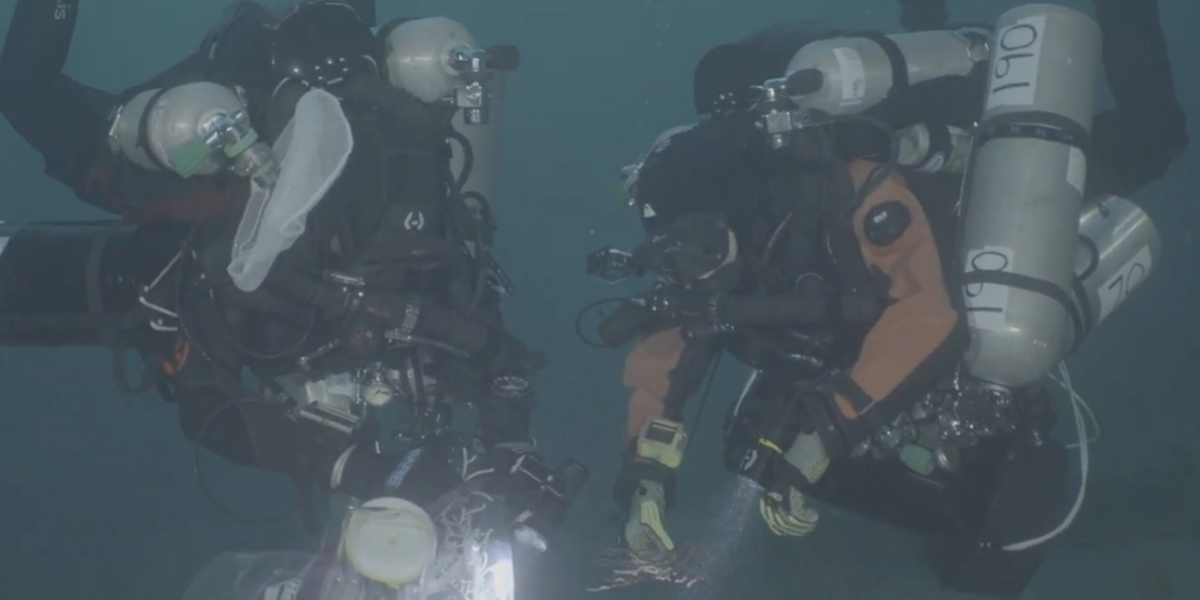Written by Francheska “Scuba Franny” Krysiak
Mesophotic and Deep Benthic Communities Project
JUNE 2024 | GULF OF MEXICO, U.S.A.

DIVING DEEP IN THE NAME OF RESTORATION
Unprecedented in both scope and nature, the Deepwater Horizon oil spill in the Gulf of Mexico was the largest in U.S. history. In April 2010, an explosion on the drilling platform killed 11 men and started a catastrophic oil leak that seemed impossible to stop for weeks. Almost three months later when over 134 million gallons of oil has spilt into the Gulf, the well head was finally capped. This high-profile event was even made into a Mark Wahlberg movie!
After the Deepwater Horizon oil spill, federal and state agencies assessed the impacts of the spill and plan restoration for the resources and ecosystems that were injured. Today, the National Oceanic and Atmospheric Administration (NOAA) and the Department of the Interior is leading several projects to improve the understanding of the affected habitats and increase the information available to restore areas impacted by the spill.
Earlier this year, I was presented with the opportunity to join one of four Mesophotic and Deep Benthic Communities (MDBC) projects as a scientific rebreather diver. The Coral Propagation Technique Development project is developing methods and techniques to enhance coral recruitment and growth and determine which ones are successful to apply at a larger scale for restoration in the Gulf. This multi-year effort is led by one of the largest ocean science agencies in the world (hello, NOAA!) and is bringing together researchers, technical and scientific divers, dive officers, undersea physicians, and technicians. Prior to this expedition, I hadn’t yet had the opportunity to work with NOAA, and having the opportunity to join a MDBC project was a long-time dream come true!
During the mission in June 2024, I, along with other technical divers used specialized equipment like closed-circuit rebreathers to conduct operations in support of this restoration work in the upper mesophotic zone (55 meters/180 fsw) of the DeSoto Canyon. We conducted scientific activities like sampling of corals, invertebrates, and fish, photography, and sensor deployments – all under the pressure of hundreds of feet of water above, in the largely unexplored mesophotic zone.
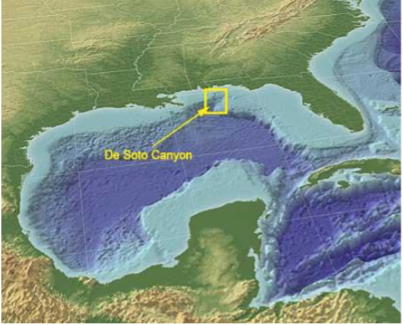
PROJECT DETAILS
Goal: to restore ecosystems injured by the Deepwater Horizon oil spill and improve understanding of these habitats to inform better management and ensure resiliency.
Purpose: more than 770 square miles of Gulf deep-sea and mesophotic habitat were injured by the oil spill in 2010.
Objectives: fill critical knowledge gaps about mesophotic and deep-sea corals to inform future restoration efforts; develop coral propagation techniques; work towards restoring habitat-forming taxa to support ecosystems.
The Gulf of Mexico is one of 4 meso-pelagic regions deemed “super-diverse”.
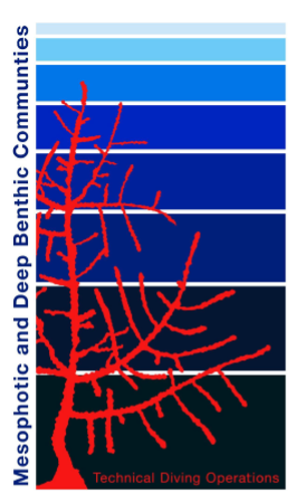
| Mesophotic means “middle light”. This zone of the ocean receives much less sunlight than the shallow coral ecosystems that most people are familiar with. Mesophotic coral ecosystems are coral communities in low light depths, from 100 to 490 feet below the surface. They are extensions, but distinct, from shallow coral reefs; they provide vital habitat and are home to many species. Most mesophotic zones receive only about 1-10% of the light levels present above the surface of the water. |
COLLABORATION: The MDBC restoration projects are led by NOAA and the Department of the Interior (DOI), including the U.S. Geological Survey and the Bureau of Ocean Energy Management. NOAA and DOI are working with a multidisciplinary group of partners to plan and implement the projects. The growing network of MDBC partners includes academic, scientific, and educational institutions, public aquariums, and governmental and non-governmental organizations.
MISSION MEMBERS:
During the mission, we were led by Field Party Chief and CPT Project Manager Chris Gardner, and the MDBC Civilian Technical Diving Operations Coordinator and Diving Safety Officer at Moody Gardens, Jake Emmert. I dove with two teammates, Kevin Rodriguez, a PhD candidate from UCLA, and Chris Ledford, a Dive Officer from Moody Gardens. The second dive team included two Dive Officers from the Georgia Aquarium: Devin Waddell and Jonathan Langham, and Jake (as mentioned). Each dive team was assisted by two support divers from Moody Gardens: Clayton Leopold and Aaron Bouwkamp. We were extremely fortunate to have two medical professionals on board with us, including Dr. Leisa Deutsch our Medical Director, and Dr. Greg Barefoot, our Diving Medical Officer and Chamber Supervisor. We had additional support from Scientist William (Grant) Burdine, an aquarist with the CPT project team, and an underwater cinematographer, Zach Peterson. The mission was also supported with ship, equipment, and an awesome crew from the OSV Tyson B.
“We look forward to seeing the success of technical diving, undersea medicine, and restoration efforts, such as these in the Gulf of Mexico, continue as we bring together accomplished technical divers like Ms. Krysiak and others in the community. These activities play an important role in the mission of Moody Gardens, and we look forward to continuing our support for years to come,” Jake Emmert, Dive Safety Officer for Moody Gardens and MDBC Civilian Technical Diving Coordinator.
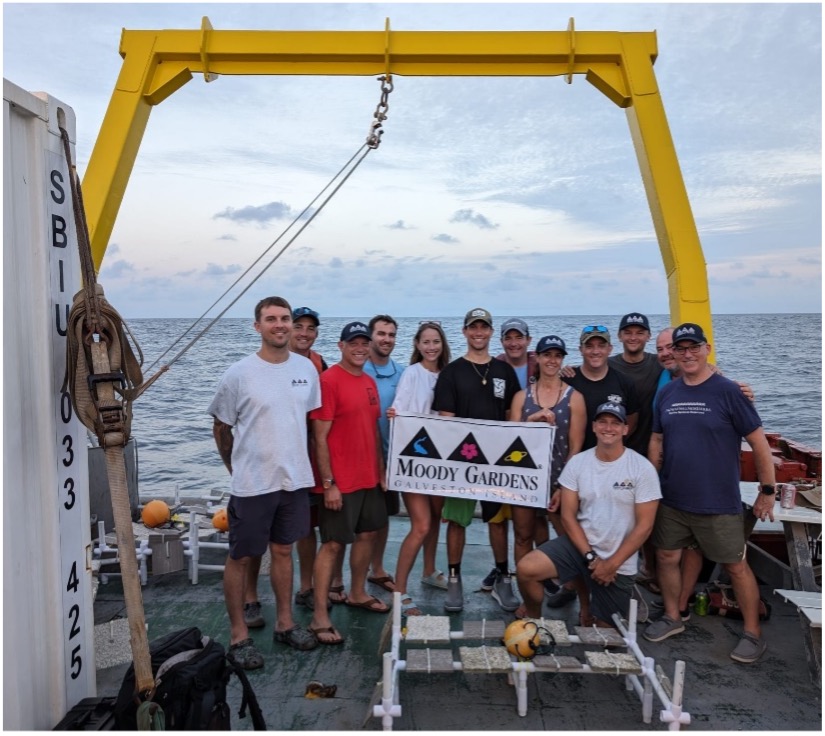
DIVING SPECS: All dives were conducted per requirements of the NOAA Diving Program, and dive planning involved members of NOAA Diving Program Safety and Control Board. The selected divers are highly trained and experienced, and skilled medical professionals were involved throughout. Each team of 3 deep divers completed four dives during the mission, and all dives were assisted by two support divers and a top-side crew. Due to strong currents, each team also called off an additional dive – and we were unable to deploy divers for two days due to inclement weather.
Scuba-diving equipment included Hollis PRISM2 rebreathers, mobile compressors, gas blending equipment, ~30 SCUBA cylinders, suits for exposure (Hollis Neotek 8/7 semi dry as pictured), underwater cameras, diver propulsion vehicles (scooters), and scientific equipment. All divers utilized mixed gas (trimix: 16/45) and 100% O2 for their onboard cylinders, as well as a minimum of two bailout cylinders (one trimix 18/35; one nitrox 50). The maximum depth for all dives was 180 fsw / 55 metres; the average bottom time was 24 minutes, and the total runtimes did not exceed 100 minutes.
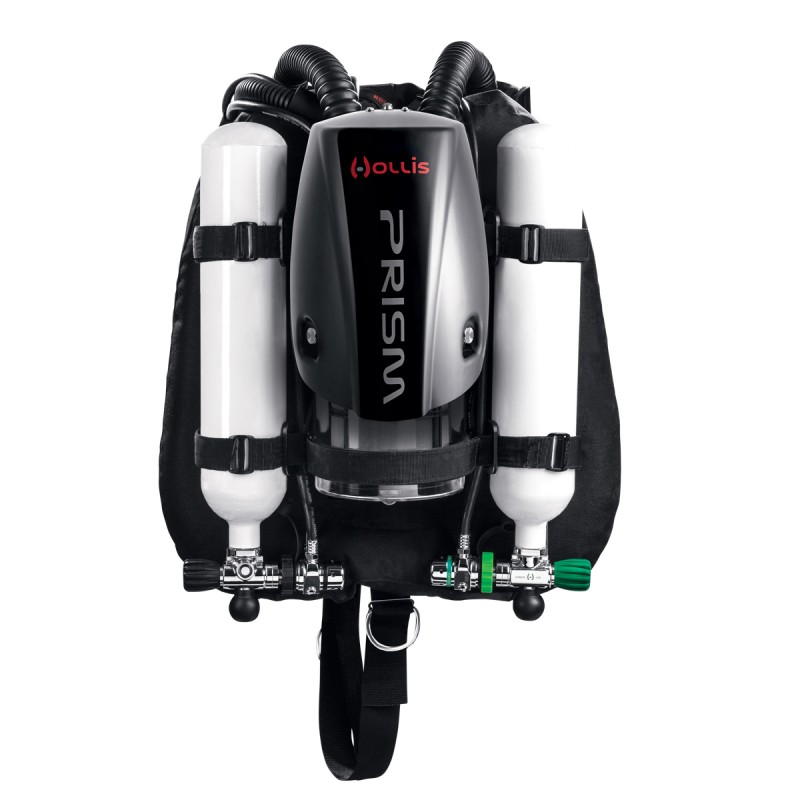
SCIENTIFIC ACTIVITIES
To support the restoration objectives for this MDBC project, we carried out numerous scientific activities while out at sea, including the deployment of reef monitoring tools (e.g., ARMS), oceanographic sensors (e.g., CTD), and larval settlement armatures (pictured [top]). We also collected live coral fragments (pictured [bottom]) for husbandry, biological samples of coral associates like invertebrates and fish for biodiversity and taxonomic study, and live rock and geological samples. The dive team also endeavored to conduct non-lethal age and growth sampling of a large Swiftia colony. The collected corals will help determine the best method for large scale restoration by testing a variety of propagation techniques, and they have even reproduced in the lab. The collection of coral associates helps characterize the diversity present in these habitats, as many mesophotic species remain unknown. In addition to deploying various tools and collecting samples, divers also documented the mesophotic coral ecosystem with photography and videography.
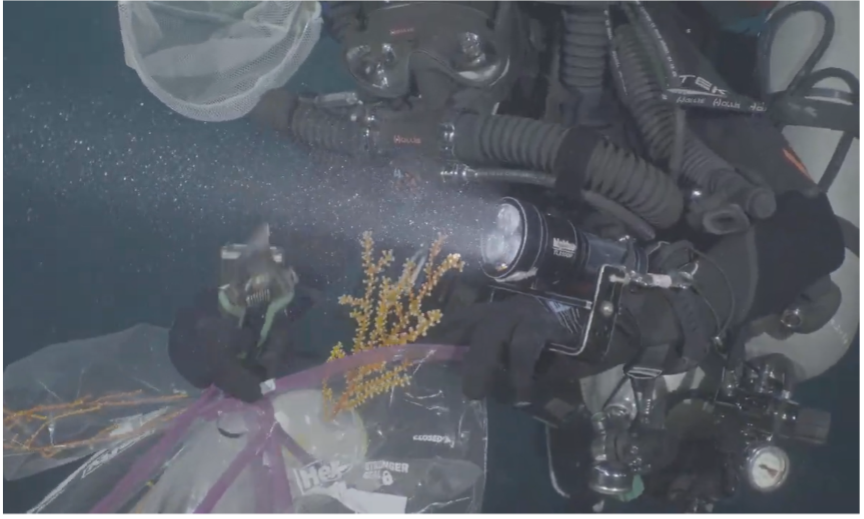
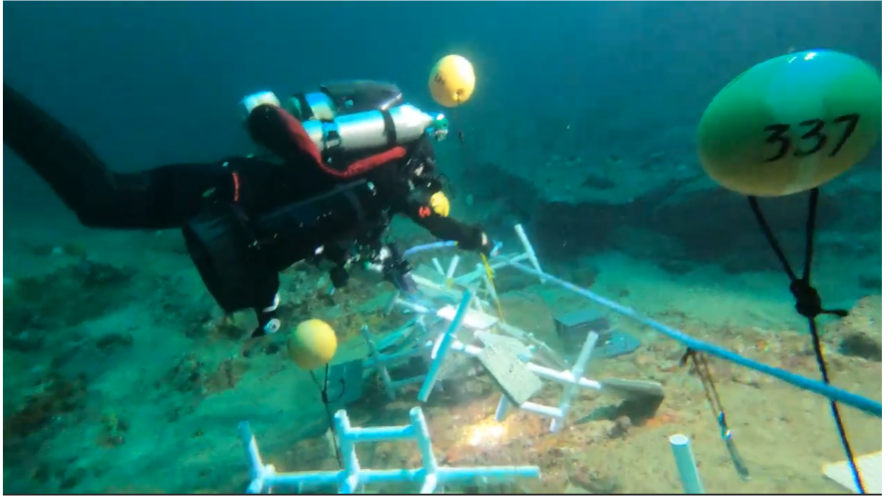
MESOPHOTIC CORAL PROPAGATION
During the mission, I collected 3 species of mesophotic coral (Swiftia exserta, Muricea pendula, Thesia nivea; pictured from top to bottom, left to right). All three of these species have successfully been maintained in laboratory settings since 2021 – they have been documented to feed, grow, and even reproduce in the lab! Collecting live samples of these corals is a key component of this project so that researchers can determine the best methods for restoring corals by testing different ‘coral propagation’ methods.
Propagation is the process of encouraging corals to grow and/or reproduce successfully. Coral propagation has been successful at shallower depths for other restoration projects, but it has rarely been attempted for mesophotic and deep-water species.
More information is needed about how to grow these species – like how they reproduce, how long they live, the conditions they thrive in, and more. With continued study, the most successful coral propagation techniques will be identified by the project team, and could then be used to work towards restoration of communities affected by the oil spill.
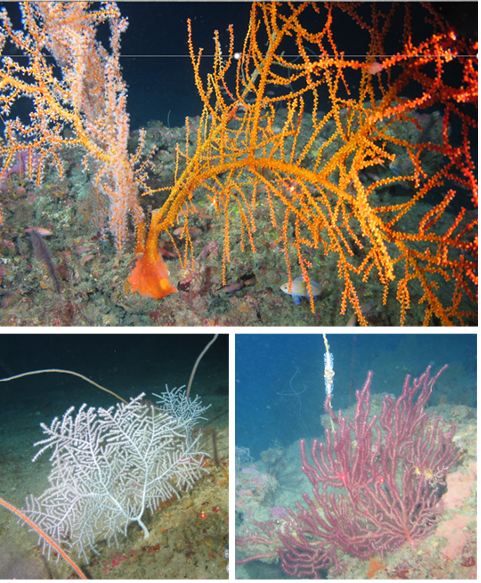

NEXT STEPS
The project will continue toward the ultimate goal of restoring mesophotic and deep benthic communities, with a focus on habitat-forming coral species (pictured above). The team is continuing work in the field and in the lab as well as through supporting education and outreach events. As for me, I hope to be back next year in the next round of missions to support this important work in the Gulf of Mexico!
For more information on the project: Mesophotic and Deep Benthic Communities Restoration project
